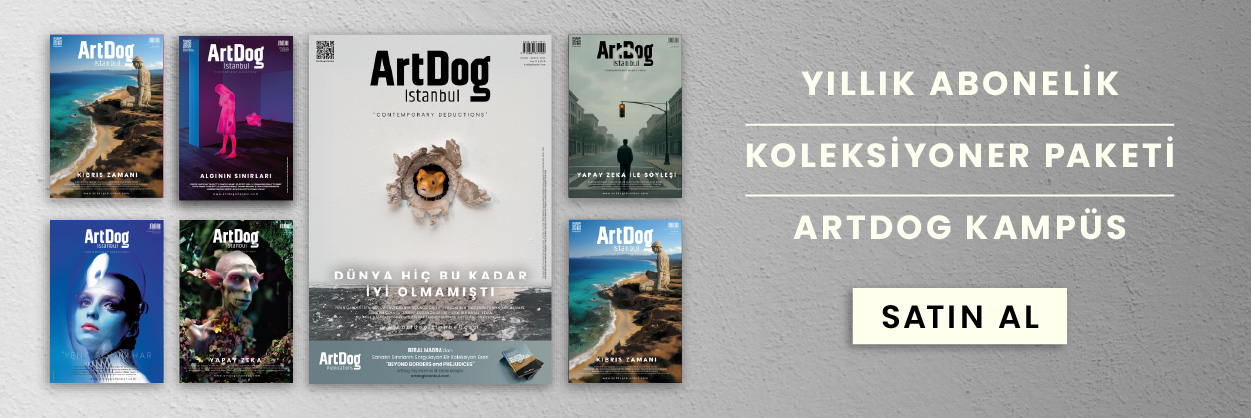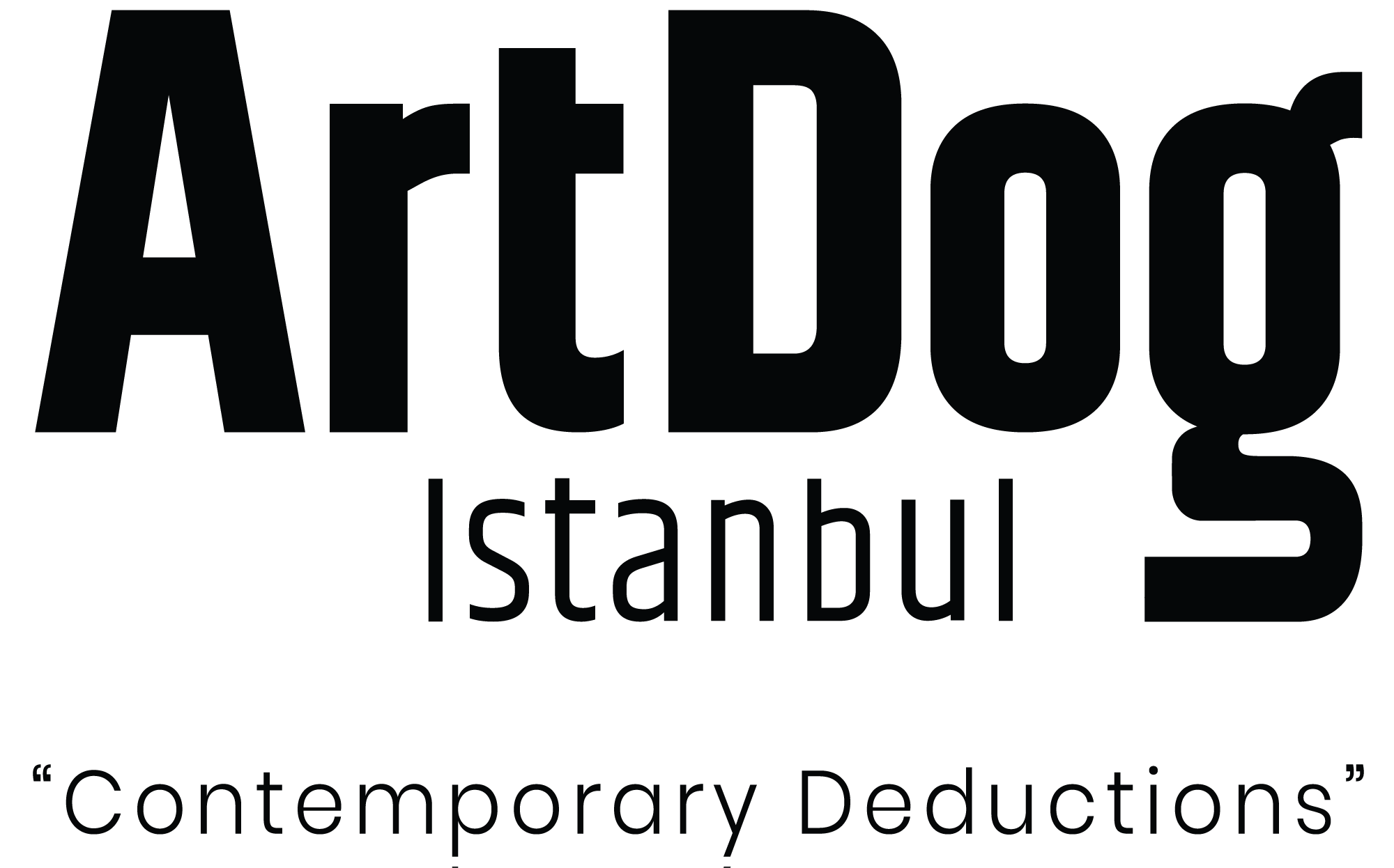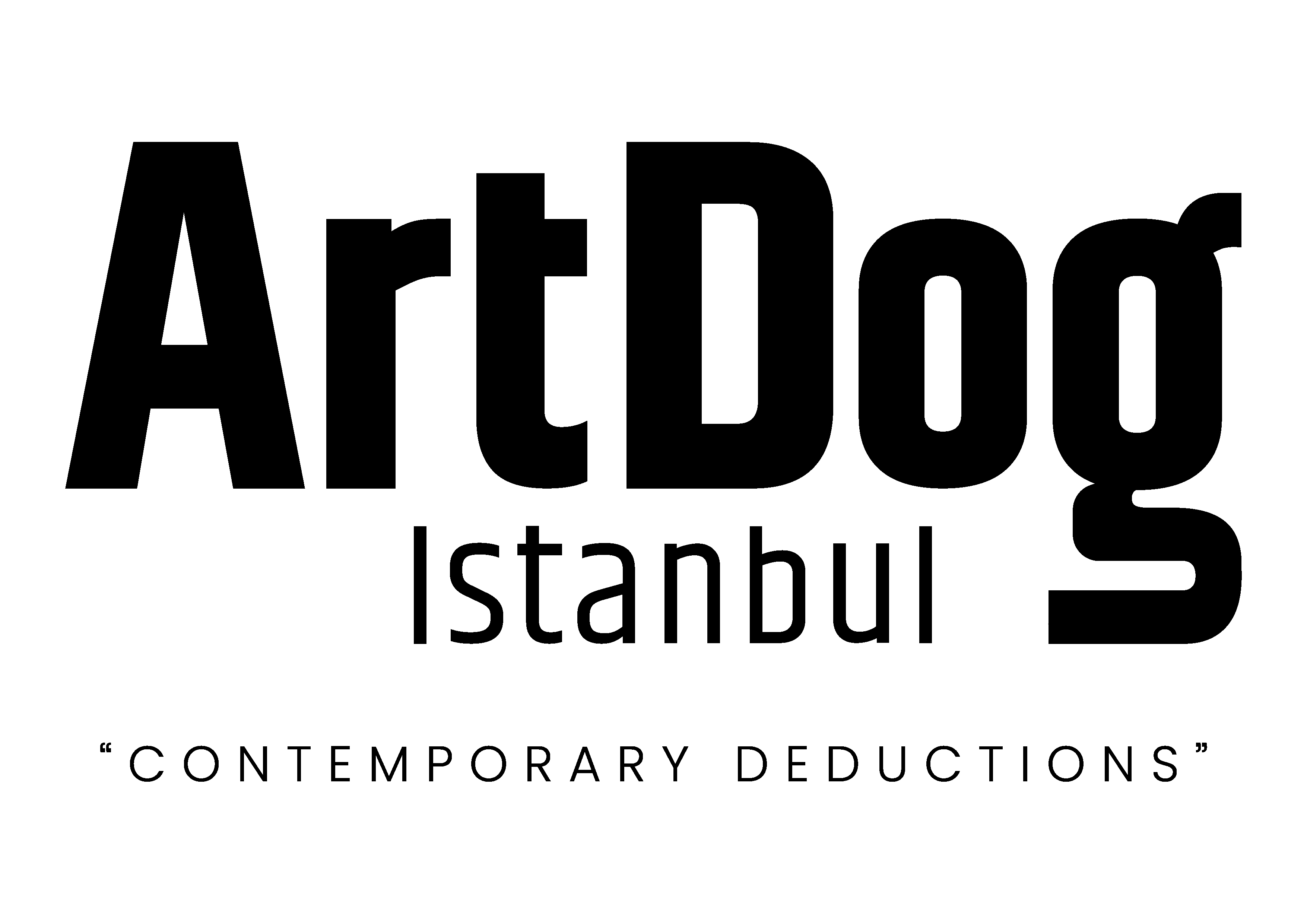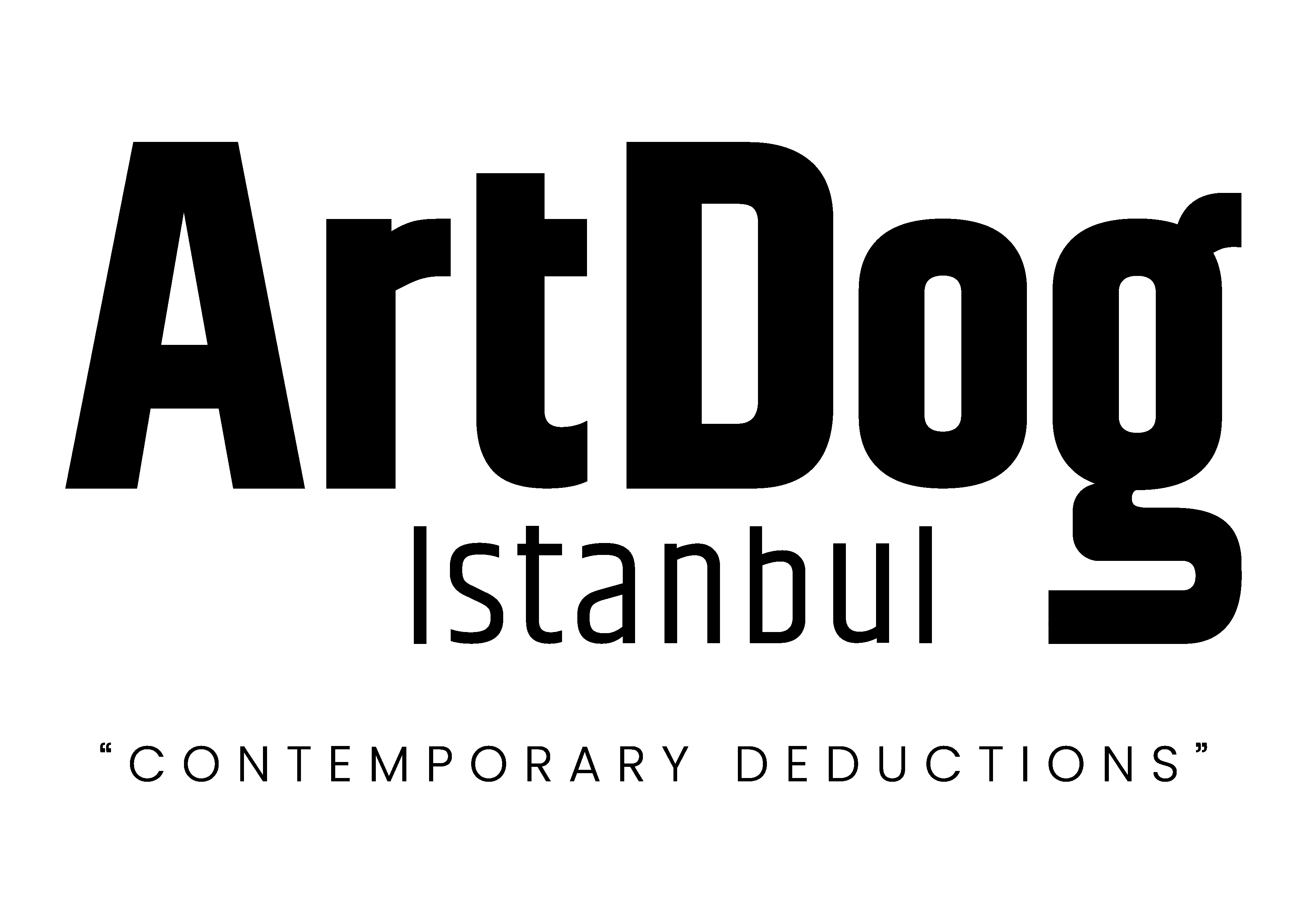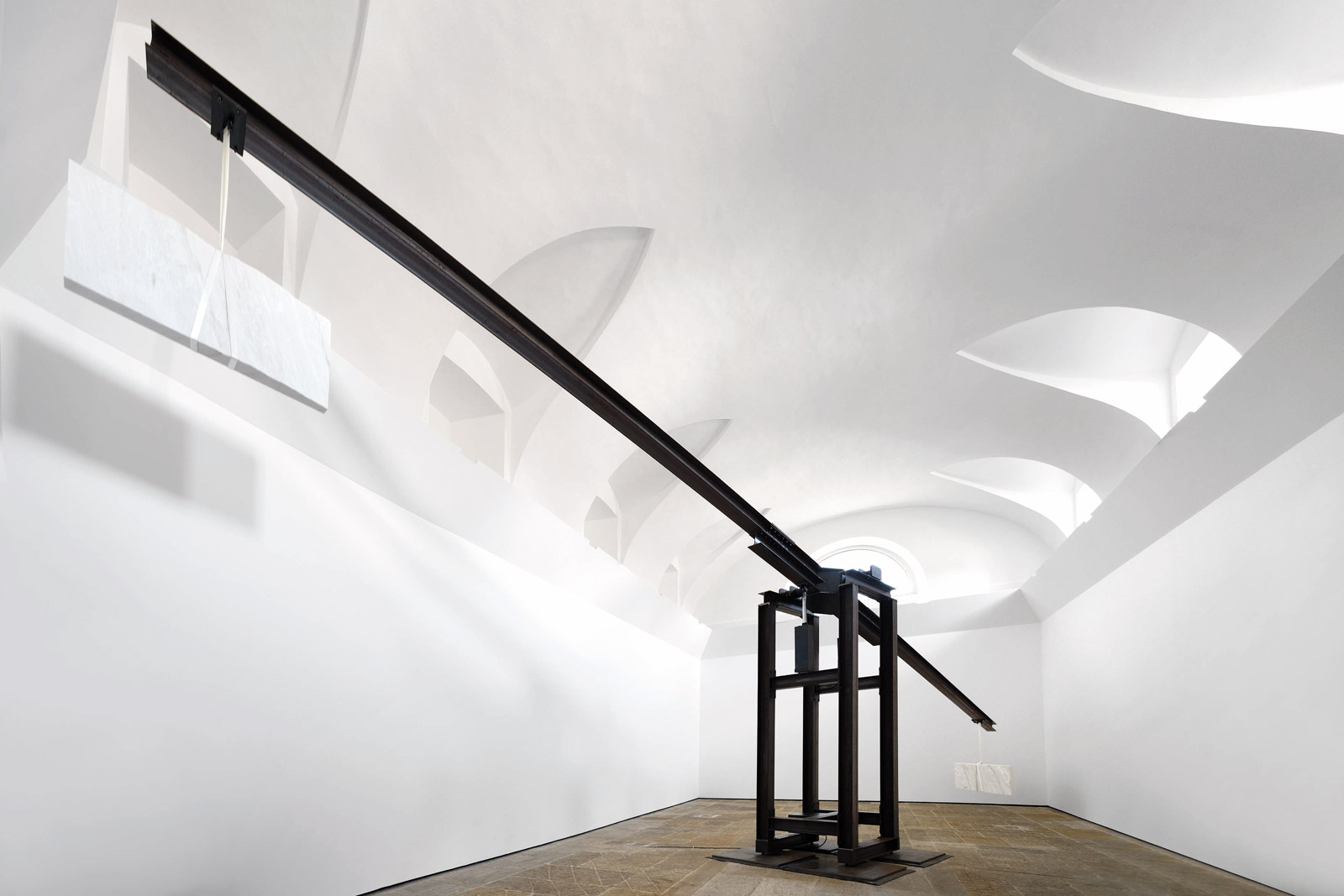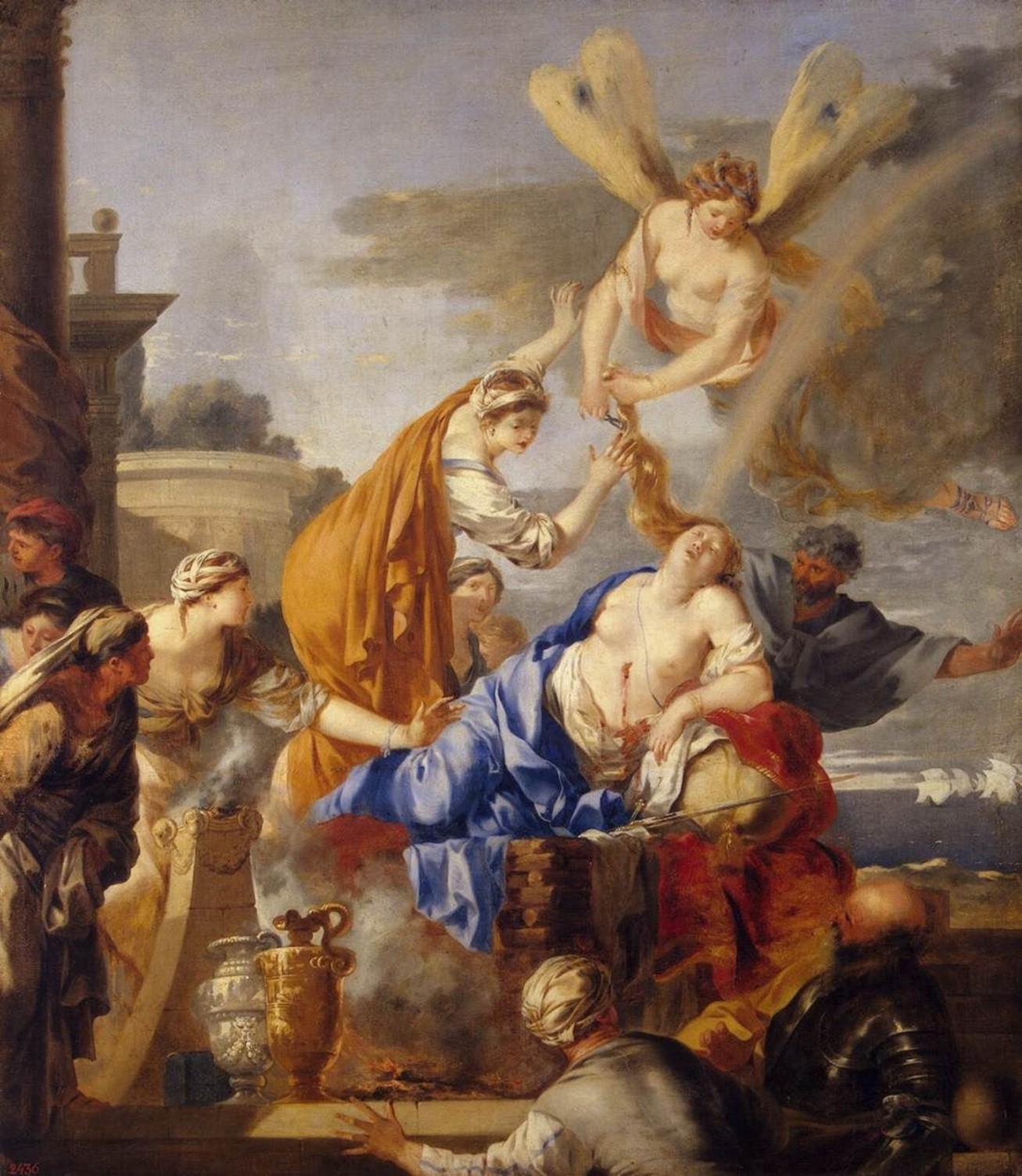Tersane Istanbul, in collaboration with Galleria Continua, presents Italian artist Arcangelo Sassolino’s installation The State of Desire to the audience, launching its public art projects for September with this work. The State of Desire stands out as one of the best examples of the artist’s metaphorical works that combine physics and art. Located at Beymen Tersane, G8-The Space opens its doors for the first time with this work. First exhibited in 2009 at Z33 House for Contemporary Art in Belgium, The State of Desire is a massive mechanical metronome measuring 18 meters in length and weighing 2.4 tons. In this installation, Sassolino aims to produce a metaphor for human emotions and desires by combining the scientific field of physics with the creativity of art. This production focuses on poetic works by combining physical topics such as mechanics, structuralism, metamorphosis, tension, and movement with human emotions and feelings. The State of Desire, while describing the compulsion, failure, and tension of desire in humans, wants us to look at the ever-changing human condition. Constructed from iron beams and powered by a hydraulic system, the structure brings to life a long mechanical arm that rhythmically swings two large marble blocks.
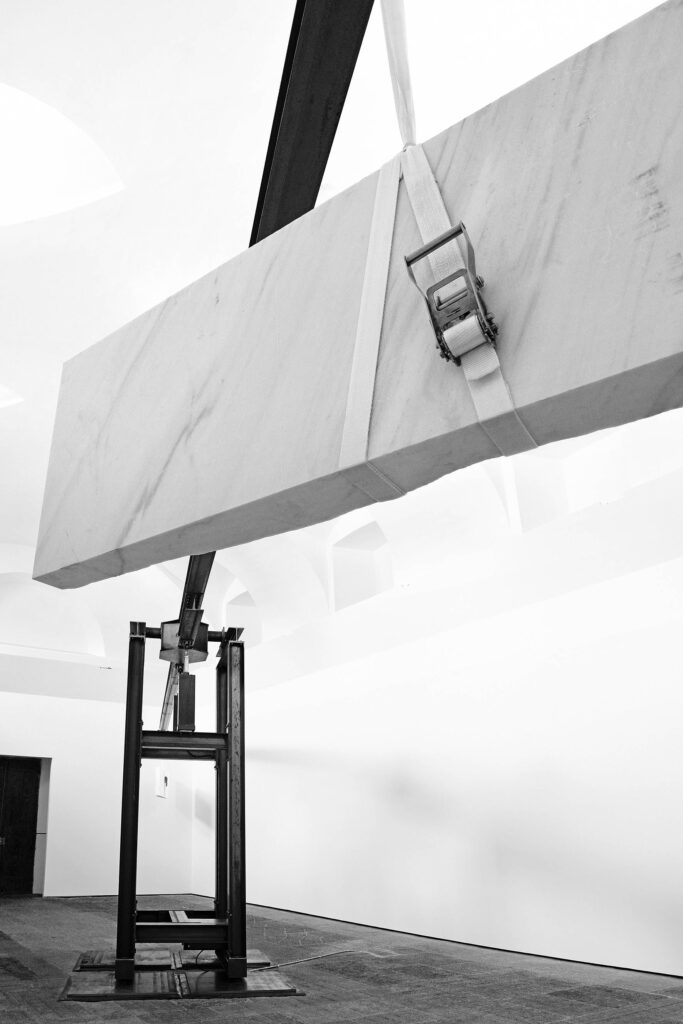
A Poetic Representation
The State of Desire installation finds a new resonance at Beymen Tersane G8 – The Space, a historic shipyard building that stands out as a place that reflects the past onto the present. Thus, the relationship between fragility and power that the work seeks to show the viewer is reflected alongside the layered character of the Golden Horn, a place where the collective memory of industry, contemporary culture, and human longing intersect. With this renewed meaning, the sculpture expresses desire not only as a personal condition but also as a shared reflection through existence, fragility, and the pulse of Istanbul. The artist brings together different materials. For him, marble is not only a material used in a traditional context and a symbol of tradition, but also a living representation of the human condition spread over time. Marble, which has been associated with permanence and monuments throughout history, here becomes a search for fragile balance, like the limits of desire, like its transience… While the tension created by weight pushes the structure to its limits, according to the artist, the sounds of metal echo the paradox of desire and the state of desiring: an endless cycle, satisfaction and reborn lack. In fact, this situation is in a way an agreement with human conditions, a state of peace made with the difficult nature of desire. Thus, The State of Desire actually expresses a poetic representation from a rather philosophical field. The artist also states that fulfilling a desire often requires a long effort and sometimes never happens. And he expresses that this situation is one of the paradoxes of existence. “Desire repeats itself, over and over again. Even when satisfied, a new void immediately follows. It is an endless cycle.”
For Sassolino, expressing the dimensional world of physics in poetic language is an important artistic stance. One of the fundamental requirements of his art is both philosophical approaches and poetic discourse. Using elements such as speed, pressure, gravity, acceleration, and heat to produce performative sculptures and construct mechanical devices, the artist addresses emotional themes such as tension and unpredictability in his works. On the other hand, he uses the inevitable elements of human experience as a concept in his installations and sculptures. In The State Of Desire, he shows us the compelling nature of desire. Does a person exist in a state free of desires, what is this state like, and can one be at peace with it? Or must a person first be at peace with their desires? For the artist, who starts from questions such as these, every human state is a concept and subject to be explored.
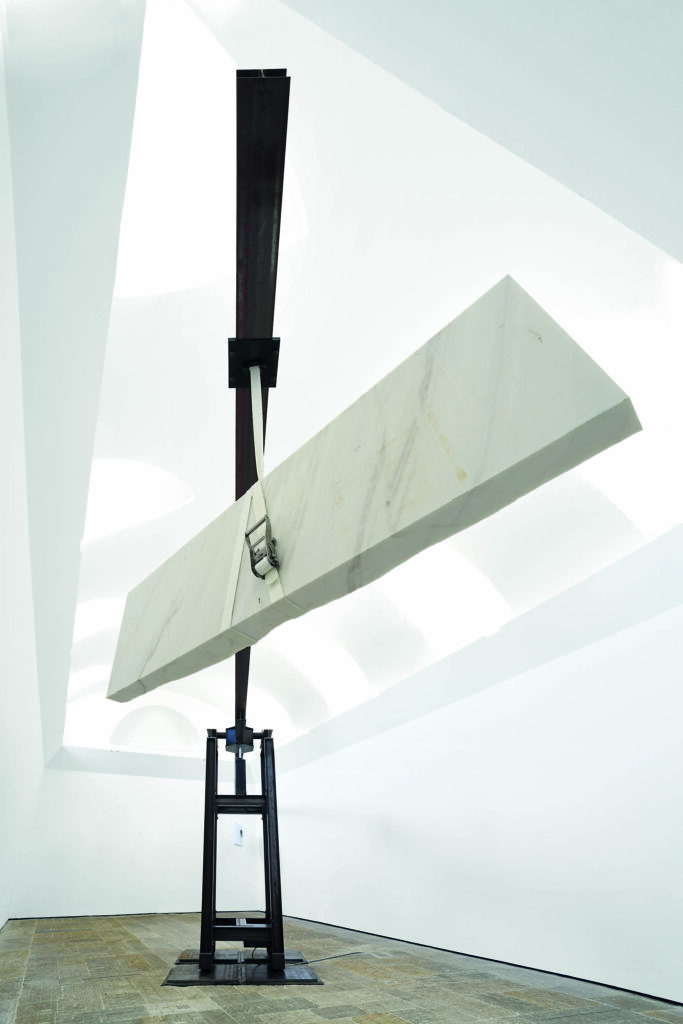
The Production Process of Sassolino
Sassolino says the following about his sculptures, which are intertwined with metaphors he creates about people’s feelings and the emotional states they encounter in their lives: “I think of sculpture as a material work based on our experience of instability, disintegration, separation, and moments of transition. What interests me most is capturing the moment when one thing is transforming into something else. I see sculpture not as a static ‘now’, but rather as the flow of time, its incessant, inevitable, and unpredictable change—just like life itself.”
Sassolino’s interest in mechanics and technology brings together new meanings and possibilities for sculpture, while we see him pushing the limits of the resistance of matter in his works. As in his installation The State of Desire, Sassolino expresses physical forces such as speed, pressure, and gravity in different fields using a poetic visual language.
Sassolino’s works have been exhibited at international institutions such as the Palais de Tokyo (Paris), Contemporary Art Museum (St. Louis), Frankfurter Kunstverein (Frankfurt), Museo MACRO (Rome), Villa Medici (Rome), and the Peggy Guggenheim Collection (Venice). Representing Malta at the 59th Venice Biennale in 2022, the artist drew attention with his installation Diplomazija Astuta, a contemporary interpretation of Caravaggio’s The Beheading of Saint John the Baptist. Sassolino also pushes the boundaries of his production practice with large-scale installations.
Sassolino’s work converges with Tersane’s architectural language at common points. Tersane and Sassolino, who take innovative approaches to the historical fabric of naval architecture, come together in the same parallel field with works that combine physical laws and highlight poetic artistic language.
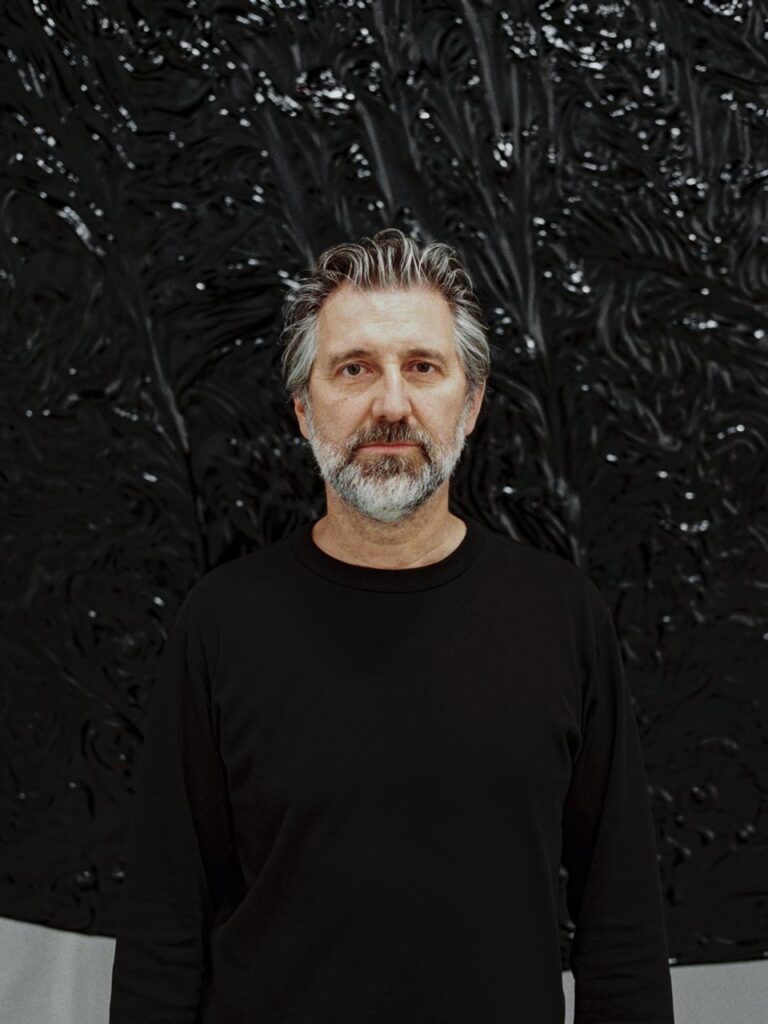
Extensive Research Processes
Behind each of Sassolino’s works lies a meticulous research process. The artist plans and researches his productions; thus, when he pushes materials beyond their physical limits, he reveals structures shaped by intense materiality and forces applied to or emanating from the object. On the other hand, when producing his works, the artist approaches his productions as a kind of invention. In his works, we see different materials transformed and conceptualized, such as fire, table surfaces bent under stones, large round mechanisms with changing surfaces, unbreakable glass, and mechanical sculptures. Expressing mechanical movements in poetic language, the artist explores the place of this mechanics and physics in human existence. In Sassolino’s works, no material remains as we use it in our daily lives. In this context, the artist also shows us the flexibility of the material and its conceptual transformation. In his works, we discover questions such as how matter occupies space, how matter transforms and changes, and how the movement of matter changes.
Technology is another prominent area of use in Sassolino’s works. Even though technology may seem to be at the forefront in some of his works, the viewer still encounters a simple structure that is far from technical. He presents a structure and mechanics that could be described as primitive in a distinct manner, thereby referencing humanity’s use of mechanics while also critiquing it.
Tersane Istanbul
With a maritime history spanning six centuries, Tersane Istanbul aims to redefine the city’s cultural fabric today, bringing together various art exhibitions, installations, and sculptures in this context. Collaborating with pioneering international institutions such as Galleria Continua, Tersane Istanbul hosts world-renowned artists and focuses on transformative, inspiring, and thought-provoking projects. Having hosted Contemporary Istanbul for many years, Tersane Istanbul has become an important meeting point on Istanbul’s art and culture calendar. Historically a pioneer in naval engineering and a center of creativity and progress, this space now aims to bring that same innovative spirit to the fields of art and culture. Tersane Istanbul seeks to host new exhibitions by transforming the legacy of invention from the past into a contemporary cultural vision that extends into the future.

